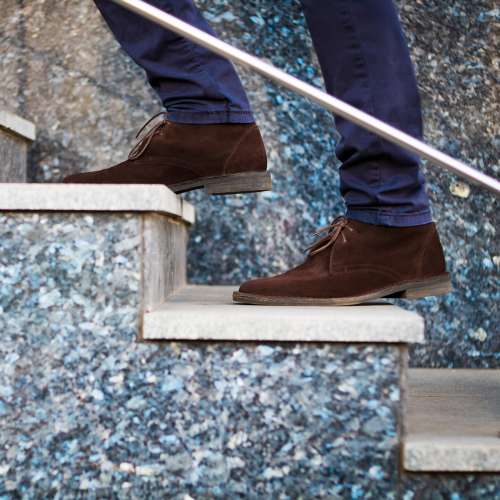Hello Again Ange.
I almost forgot. As I was browsing through past posts last week, I came across a very interesting article copied from another site about this subject.(United Ostomy Associations of America) It was mentioning the fact that under certain controlled circumstances it is possible to irrigate an ileostomy when there are blockages. Now, this is not something to undertake without medical assistance , so it is in no way 'advice' on the subject, but nonetheless it is interesting to know about for when we have discussions with medical staff. I'll copy the article blelow:
Best wishes
Bill
HOW TO TREAT ILEOSTOMY BLOCKAGE
Symptoms: Thin, clear liquid output with foul odor; cramping
abdominal pain near the stoma; decrease in amount of or
dark-colored urine, abdominal and stomal swelling.
Step One: At Home
1. Cut the opening of your pouch a little larger than normal because
the stoma may swell.
2. If there is stomal output and you are not nauseated or vomiting,
only consume liquids such as Coke, sports drinks, or tea.
3. Take a warm bath to relax the abdominal muscles.
4. Try several different body positions, such as a knee-chest
position, as it might help move the blockage forward.
5. Massage the abdomen and the area around the stoma as this might
increase the pressure behind the blockage and help it to �pop
out.� Most food blockages occur just below the stoma.
Step Two: If you are still blocked, vomiting, or have no stomal
output for several hours:
1. Call your doctor or WOC/ET Nurse and report what is
happening and what you tried at home to alleviate the
problem. Your doctor or WOC/ET Nurse will give you instructions
(ex., meet at the emergency room, come to the offi ce). If you are
told to go to the emergency room, the doctor or WOC/ET Nurse
can call in orders for your care there.
2. If you cannot reach your WOC/ET Nurse or surgeon and
there is no output from the stoma, go to the emergency
room immediately.
3. IMPORTANT: TAKE THIS CARD WITH YOU TO THE EMERGENCY
ROOM AND GIVE IT TO THE PHYSICIAN.
4. IMPORTANT: TAKE ALL OF YOUR POUCH SUPPLIES
(eg., pouch, wafer, tail closure, skin barrier spray, irrigation
sleeve, etc.)
United
Ostomy
Associations of
America, Inc.
United Ostomy Associations of America
P.O. Box 66
Fairview, TN 37062
800-826-0826, www.uoaa.org
EMERGENCY ROOM STAFF:
ILEOSTOMY OBSTRUCTION
Symptoms: No stomal output; cramping abdominal pain; nausea
and vomiting; abdominal distention, stomal edema, absent or faint
bowel sounds.
1. Contact the patient's surgeon or WOC/ET Nurse to obtain history
and request orders.
2. Pain medication should be initiated as indicated.
3. Start IV fl uids (Lactated Ringer's Solution/Normal Saline)
without delay.
4. Obtain fl at abdominal x-ray or CT scan to rule out volvulus
and determine the site/cause of the obstruction. Check for local
blockage (peristomal hernia or stomal stenosis) via digital
manipulation of the stoma lumen.
5. Evaluate fl uid and electrolyte balance via appropriate
laboratory studies.
6. If an ileostomy lavage is ordered, it should be performed by a
surgeon or ostomy nurse using the following guidelines:
� Gently insert a lubricated, gloved fi nger into the lumen of the
stoma. If a blockage is palpated, attempt to gently break it up with
your fi nger.
� Attach a colostomy irrigation sleeve to the patient's two-piece
pouching system. Many brands of pouching systems have
Tupperware�-like fl anges onto which the same size diameter
irrigation sleeve can be attached. If the patient is not wearing
a two-piece system, remove the one-piece system and attach a
colostomy irrigation sleeve to an elastic belt and place it over
the stoma.
� Working through the top of the colostomy irrigation sleeve, insert
a lubricated catheter (#14�16 FR) into the lumen of the stoma
until the blockage is reached. Do not force the catheter.
� Note: If it is possible to insert the catheter up to six inches, the
blockage is likely caused by adhesions rather than a food bolus.
� Slowly instill 30�50 cc NS into the catheter using a bulb syringe.
Remove the catheter and allow for returns into the irrigation sleeve.
Repeat this procedure instilling 30�50 ccs at a time until the
blockage is resolved. This can take 1�2 hours.
7. Once the blockage has been resolved, a clean, drainable
pouch system should be applied. Because the stoma may be
edematous, the opening in the pouch should be slightly larger than the stoma.






